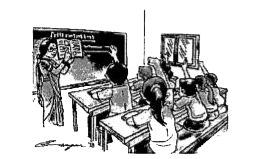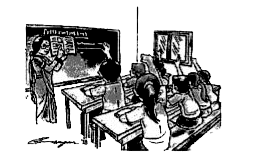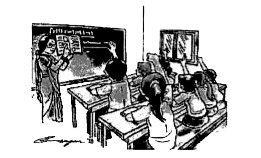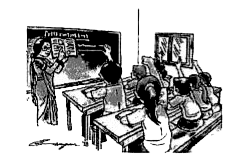For teaching the concept of probability, Mrs. Verma decided to use two dice. Shet took a pair of die and write all the possible outcomes on the blackboard. All possible outcomes wave:

(1,1), (1,2), (1,3), (1,4), (1,5), (1,6)
(2,1), (2,2), (2,3), (2,4), (2,5), (2,6)
(3,1), (3,2), (3,3), (3,4), (3,5), (3,6)
(4,1), (4,2), (4,3), (4,4), (4,5), (4,6)
(5,1), (5,2), (5,3), (5,4), (5,5), (5,6)
(6,1), (6,2), (6,3), (6,4), (6,5), (6,6)
The probabiliyt that both numbers comes up are prime numbers, is
34
14
23
12
Step by step video solution for For teaching the concept of probability, Mrs. Verma decided to use two dice. Shet took a pair of die and write all the possible outcomes on the blackboard. All possible outcomes wave: (1,1), (1,2), (1,3), (1,4), (1,5), (1,6) (2,1), (2,2), (2,3), (2,4), (2,5), (2,6) (3,1), (3,2), (3,3), (3,4), (3,5), (3,6) (4,1), (4,2), (4,3), (4,4), (4,5), (4,6) (5,1), (5,2), (5,3), (5,4), (5,5), (5,6) (6,1), (6,2), (6,3), (6,4), (6,5), (6,6) The probabiliyt that both numbers comes up are prime numbers, is by Maths experts to help you in doubts & scoring excellent marks in Class 10 exams.
Updated on:21/07/2023Topper's Solved these Questions
- SAMPLE PAPER 9 (SELF-ASSESSMENT)Book:EDUCART PUBLICATIONChapter:SAMPLE PAPER 9 (SELF-ASSESSMENT)Exercise:Section -B
Explore 20 Videos
- SAMPLE PAPER 9Book:EDUCART PUBLICATIONChapter:SAMPLE PAPER 9Exercise:SECTION C
Explore 10 Videos
- SAMPLE PAPER SELF ASSESSMENT 11Book:EDUCART PUBLICATIONChapter:SAMPLE PAPER SELF ASSESSMENT 11Exercise:Section (iv)
Explore 13 Videos
Similar Questions
For teaching the concept of probability, Mrs. Verma decided to use two dice. Shet took a pair of die and write all the possible outcomes on the blackboard. All possible outcomes wave:

(1,1), (1,2), (1,3), (1,4), (1,5), (1,6)
(2,1), (2,2), (2,3), (2,4), (2,5), (2,6)
(3,1), (3,2), (3,3), (3,4), (3,5), (3,6)
(4,1), (4,2), (4,3), (4,4), (4,5), (4,6)
(5,1), (5,2), (5,3), (5,4), (5,5), (5,6)
(6,1), (6,2), (6,3), (6,4), (6,5), (6,6)
The probability that both numbers comes up are even, is
View SolutionFor teaching the concept of probability, Mrs. Verma decided to use two dice. Shet took a pair of die and write all the possible outcomes on the blackboard. All possible outcomes wave:

(1,1), (1,2), (1,3), (1,4), (1,5), (1,6)
(2,1), (2,2), (2,3), (2,4), (2,5), (2,6)
(3,1), (3,2), (3,3), (3,4), (3,5), (3,6)
(4,1), (4,2), (4,3), (4,4), (4,5), (4,6)
(5,1), (5,2), (5,3), (5,4), (5,5), (5,6)
(6,1), (6,2), (6,3), (6,4), (6,5), (6,6)
The probability that 6 will come up on both dice is
View Solution
Knowledge Check
There are three relations R1,R2 and R3 such that
R1={(2,1),(3,1),(4,2)},
R2 = {(2,2),(2,4),(3,3),(4,4)} and
R3 = {(1,2),(2,3),(3,4),(4,5),(5,6),(6,7)}
thenAR1andR2 are functionsBR2andR3 are functionsCR1andR3 are functionsDOnly R1 is a function556+[223−[334(345÷912)]]
A7B223C447D436
For teaching the concept of probability, Mrs. Verma decided to use two dice. Shet took a pair of die and write all the possible outcomes on the blackboard. All possible outcomes wave:

(1,1), (1,2), (1,3), (1,4), (1,5), (1,6)
(2,1), (2,2), (2,3), (2,4), (2,5), (2,6)
(3,1), (3,2), (3,3), (3,4), (3,5), (3,6)
(4,1), (4,2), (4,3), (4,4), (4,5), (4,6)
(5,1), (5,2), (5,3), (5,4), (5,5), (5,6)
(6,1), (6,2), (6,3), (6,4), (6,5), (6,6)
The probability that 5 will come up at least once is:
View SolutionFor teaching the concept of probability, Mrs. Verma decided to use two dice. Shet took a pair of die and write all the possible outcomes on the blackboard. All possible outcomes wave:

(1,1), (1,2), (1,3), (1,4), (1,5), (1,6)
(2,1), (2,2), (2,3), (2,4), (2,5), (2,6)
(3,1), (3,2), (3,3), (3,4), (3,5), (3,6)
(4,1), (4,2), (4,3), (4,4), (4,5), (4,6)
(5,1), (5,2), (5,3), (5,4), (5,5), (5,6)
(6,1), (6,2), (6,3), (6,4), (6,5), (6,6)
The probability that 4 will not come up on either of them is
View SolutionIf A={1,2,3},B={3,4}andC={4,5,6},then prove that(A×B)∪(A×C) ={(1,3),(1,4),(1,5),(1,6),(2,3),(2,4),(2,5),(2,6),(3,3),(3,4),(3,5),(3,6)}
View SolutionWhich of the following relations are functions? Give reasons. If it is a function, determine its domain and range:
(i) {(2,1), (3,1),(4,2)}
(ii) {(2,2),(2,4),(3,3),(4,4)}
(iii) {(2,1),(5,1),(8,1),(11,2),(14,2),(17,2)}
(iv) {(1,2),(2,3),(3,4),(4,5),(5,6),(6,7)}
(v){(2,1),(4,2),(6,3),(8,4),(10,5)}
(vi) {(1,2),(2,3),(3,4),(3,5),(3,7),(4,8)}
View SolutionUsing integration, find the area of the region bounded by :
(i)(1,0),(4,5)and(6,3)
(ii) (1,0),(2,2)and(3,1)
(iii)(−1,2),(1,5)and(3,4)
(iv) (2,3),(3,5)and(3,4)
(v) (−1,0),(1,3)and(3,2)
(vi) (1,3),(2,5)and(3,4)
(vii) (4,1),(6,6)and(8,4)
(viii) (2,5),(4,7)and(6,2)
(ix) (−2,1),(0,4)and(2,3)
(x) (2,1),(3,4)and(5,2).
View SolutionIn the following which is a function ? (i) {(1,2),(2,3),(3,4),(4,5),(5,6),(6,7)}
View Solution